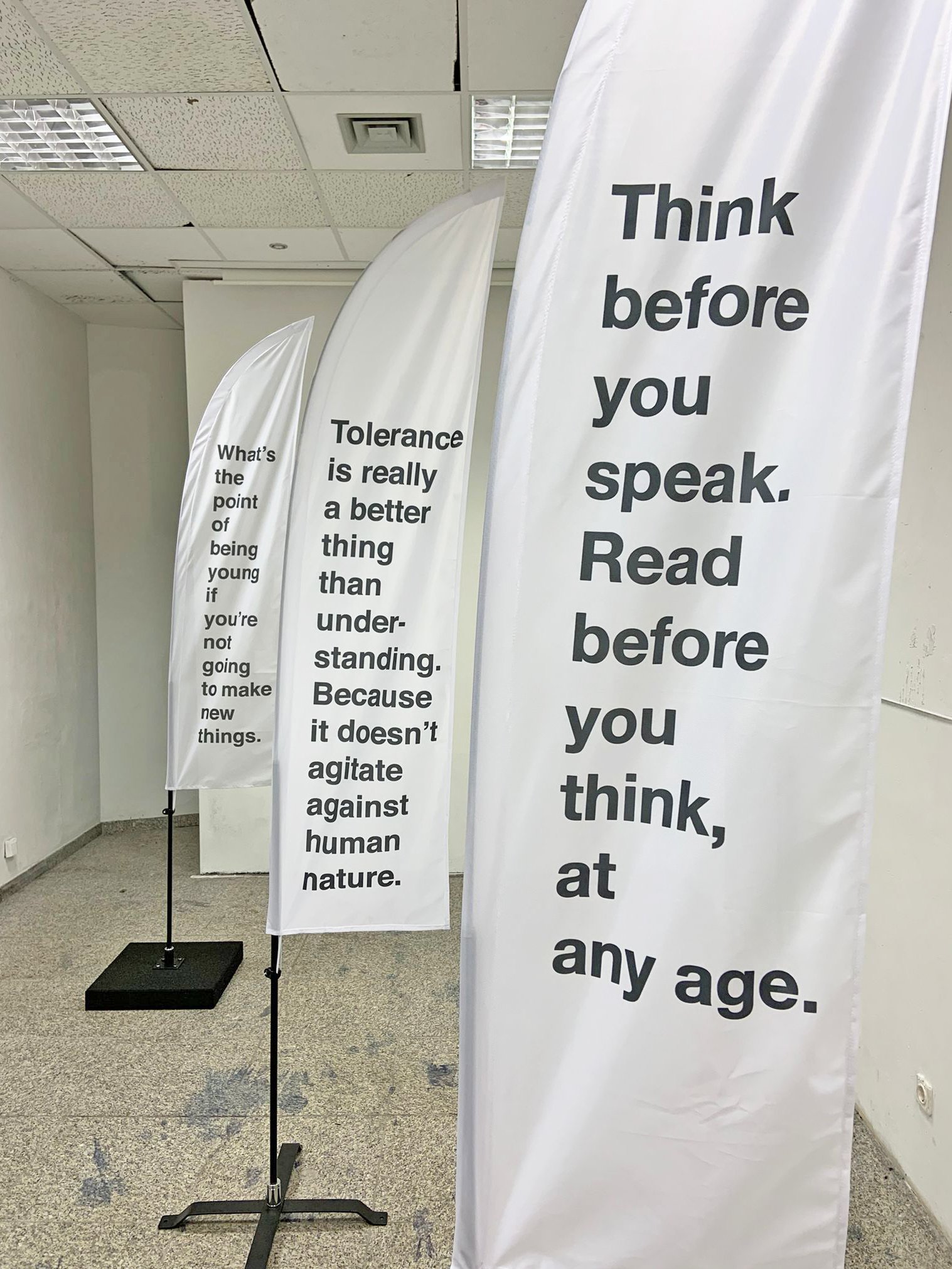Interview with Ana Gómez

Unveiling Identity: An Interview with Ana Gómez
In the world of contemporary art, Ana Gómez stands out for her profound exploration of themes like belonging and identity. With installations that resonate deeply with viewers, Ana's work is a captivating journey into the complexities of human existence. In this exclusive interview, we delve into Ana's artistic journey, her inspiration, the role of language in her work, and the impact of exhibiting her art in diverse cultural contexts.
Ana Gómez, 'Vaivén', 2021
Origin of Artistic Exploration
What led you to focus on themes such as belonging and identity, and how do you explore these concepts through your installations?
The themes of belonging and identity are deeply rooted in my personal experiences. Having lived in different countries like the United States, Colombia, and Germany, I found myself questioning who I am and where I truly belong. These questions became particularly pronounced when I first lived in the United States as a Colombian American and later when I pursued my MFA in Germany.
These existential questions often find their way into the texts I incorporate into my installations, adding a layer of depth and reflection on our identities. Identity is a topic that universally resonates with people, and I strive to create art that taps into this shared human experience. My installations are designed to be versatile and easily transportable, echoing the fluidity of identity itself. I use materials like fabric, paper, thread, wire, and small letters, allowing me to adapt my works to various settings.
For instance, in "Interlining," the concept of belonging is manifested in the installation of a fabric room with opaque walls that restrict visibility. Yet, these walls feature holes that provide glimpses into the unknown, fostering exchange. It illustrates that while barriers exist, they are fragmented. In "I Have Lost the Thread," I delve into identity through language, emphasizing the metaphorical barriers of communication. The incomplete sentences in this piece convey a sense of not belonging to any context.
The Role of Exhibition Spaces
You describe each exhibition space as a 'character'; what do you mean by this, and what role does space play in representing the barriers you explore?
I always consider the exhibition space as an integral part of my artistic process. The way a work is installed and its interaction with the space are essential for a nuanced understanding of my art. I often tailor my pieces to specific spaces, such as "Vaivén," which was designed to fit a door frame. In contrast, "I Have Lost the Thread" required a space that allowed words to feel like they were suspended in air, emphasizing their isolated nature.
For "Where Do You Stand?" the work is not designed for a particular space but instead intended to venture into public spaces. This approach underscores the focus on the phrases themselves, each conceived as an individual banner that can be placed anywhere. The exhibition space, as a 'character,' is the backdrop that amplifies the impact and reading of my works.
Portait of the Artist Ana Gómez
Ana Gómez, I Have Lost the Thread
Wool, tulle /400 x 250 cm / 157.4 inches x 98.4 inches,2020
Ana Gómez, Entretela, 2018
The Power of Language in Art
Can you describe your use of language in your work and how you incorporate it as a key element?
Language is a vital component of my art. It establishes a direct connection with the viewer, adding depth and immediacy to the works. Language often takes center stage, as seen in pieces like "Studies," "I Have Lost the Thread," and "Where Do You Stand?"
I craft sentences that may challenge viewers, encourage introspection, or convey a sense of isolation. The way words are written reflects my intentions for each piece. In "Studies," I explore the idea of letters no longer delivering their usual messages, presenting the letters themselves as objects of contemplation.
My fascination with language is rooted in my undergraduate studies, where I focused on graphic expression. Typography, letters, and texts have become integral elements of my work. Language, in its diverse forms, can be printed on surfaces, fill three-dimensional spaces, or even be projected, enabling a multi-dimensional engagement with viewers.
Influence of Diverse Cultural Contexts
How has your experience studying and exhibiting your work in different countries and cultures influenced your artistic practice and perspective?
Studying and exhibiting my art in various countries have profoundly shaped my artistic practice. I've had the privilege of incorporating diverse perspectives and backgrounds into my work, enriching its content and impact.
Living in different countries, interacting with people from varied backgrounds, and studying in international contexts have all expanded my worldview. These experiences have broadened my artistic horizons, encouraging me to explore different facets of identity and belonging. The exchange of ideas with fellow artists during my MFA, for example, provided fresh insights and diverse perspectives that have deeply influenced my work.
I consider this exposure to different cultures and contexts as fundamental to the evolution of my artistic practice. It has enriched my art with a broader understanding of the human experience.
Reception of Your Art
Can you discuss your previous exhibitions in Colombia and Germany and how audiences and critics have received them?
Exhibiting my work in both Colombia and Germany has been a positive experience. In Colombia, I received warm receptions for my installations. Sometimes, audiences are initially hesitant to interact with the works, but I've found that my art often encourages engagement and introspection.
In particular, my BFA thesis exhibition garnered favorable comments, with viewers appreciating the unique shadows and unconventional approach.
In Germany, I also received positive reviews. "Vaivén" resonated well with an art-savvy audience, sparking meaningful discussions. The installation "Where Do You Stand?" left a lasting impression on the German public, leading to thoughtful readings and comments on each flag. The engagement and discussions surrounding the work were exceptionally gratifying.
Furthermore, collaborating with a German curator and receiving positive feedback from art critics for a group exhibition elevated my artistic journey in Germany. Our collective work was featured in a German art magazine, marking a significant milestone in my career.
Ana Gómez, I Have Lost the Thread
Current Exhibition in New York
Tell us about your current experience exhibiting in New York at the See|Me gallery and how it fits into the broader themes and concepts explored in your work.
Exhibiting my work with See|Me in New York has been an incredible experience. I was pleasantly surprised by how well my art was understood in this vibrant art scene. Nerissa, the curator of the gallery, grasped the essence of my work, leading to insightful conversations that added immense value to my creative process. It's heartening to see See|Me's enthusiasm for installation art and alternative forms of presentation.
The New York audience was also receptive and engaged. Engaging in meaningful conversations with viewers during the exhibition and the closing event was fulfilling. New York holds special significance for my art, as it marks my debut exhibition in the United States.
Exhibiting in New York is a milestone for any artist, and the networking opportunities I've gained from this experience are invaluable for my artistic career.
Ana Gómez, Entretela, 2018








